

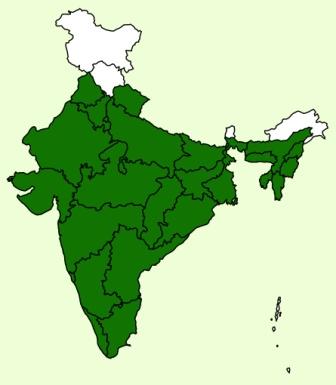
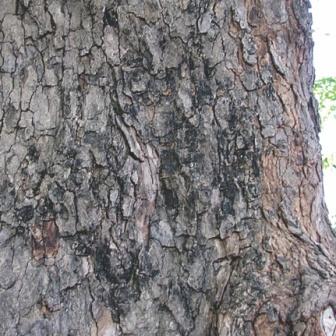
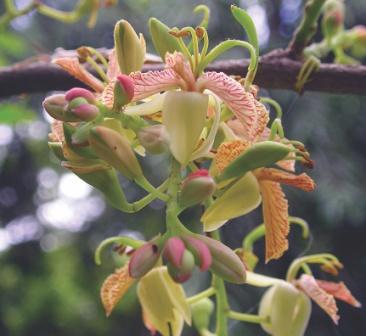
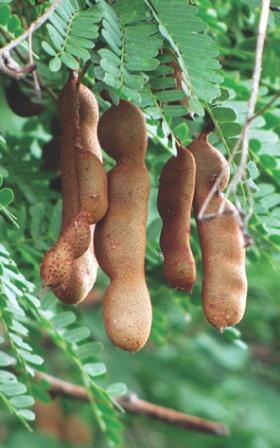
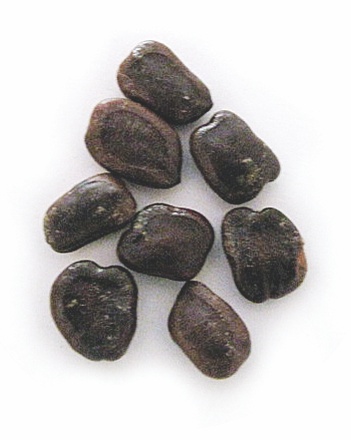
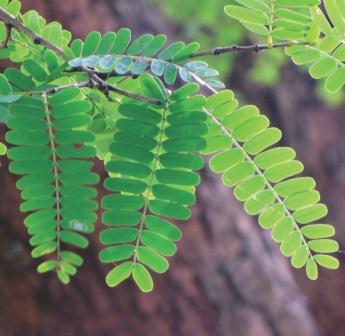
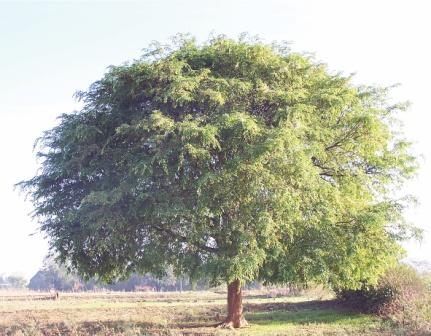
• Tamarind is a large evergreen tree growing up to 30 meters tall with a dense, spreading crown. • The tree has fragrant flowers and feathery foliage that is usually evergreen but becomes deciduous in drier regions.• The seedpod of the tamarind is widely used for food in the tropics.
• It is Idegineous to India and naturalized in south India.• It is common throughout warmer parts of India.
• Ripe pods are collected from the tree in March-April. • They dried in sun and the outer shell is removed by hand.• Washed seeds are dried and stored in gunny bags.• Seeds are viable up to 6 months.• Individual pod contain 3-10 seeds/pod. • About 1800-2000 seeds/kg
• Soaking the seeds in hot water for removal of seed coat.
• The seeds are sown in mother bed during March-April in lines about 20-25 cm apart.• Germination starts in about a week and takes about a month to complete.• Seedlings attains plantable size of 30 cm and above within 3-4 months
Direct Sowing :• This is the best method of rising the species.• This may be done either in lines behind the plough, or patches 45 cm2 dug 30 cm deep.• Depth of sowing should be about 1.5 cm.• In line sowing , seeds are spaced 5 cm apart in lines which are 4-5 m apart. • In patch sowing, 8-10 seeds are sown in each patch.Nursery raised seedlings :• 3-4 months old seeds lings are opted for planting n the onset of monsoon.• Pits size of 30 cm3 is adopted.• Minimum spacing is 5 m x 5 m which may be thinned to 10 m x 10 m as the tree matures.• Survival percentage is 70-80%
• Regular weeding ad soil working will stimulates the growth.• As tamarind is grown mainly for its fruit and not for timber, it is not removed in thinning in mixed crop.• Apply 200:150:250 g of NPK per tree per year along with 25 kg of FYM and 2 kg Neem cake.
• Plants starts bearing from 4th year onwards and the economic yield will be achieved from 9th year onwards. • Pods are harvested in March - April every year.
• The chief value of the tree lies in fruit which forms a favorite sourcing agent in foods.• Seeds are used in jams, jelly and confectionary articles.• It is also used for sizing in textile industry and as a filler for adhesives in Plywood industries.• Tamarind seed testa contains 23 % tannin.• The wood is valuable as firewood, yield excellent charcoal suitable for gun powder.
The pulp of the fruit, sometimes mixed with sea-salt, is used to polish silver, copper and brass. It is normally used when the pulp is over-ripe.The seed contains pectin that can be used for sizing textiles Ground, boiled, and mixed with gum, the seeds produce a strong wood cement.An amber coloured seed oil - which resembles linseed oil - is suitable for making paints and varnishes and for burning in lamps